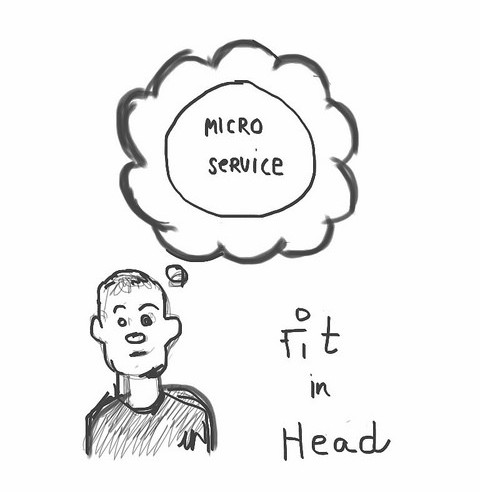Lately, the term microsevice is becoming more and more popular in software engineering. Now, if somebody designs a service without a micro-service approach, it seems they are old school, old fashion engineer … Recently I have been at the Software Circus conference in Amsterdam, and there I have heard the best definition of a microservice ever done: “something which fits in your mind”. I love that definition, but it needs to be completed with “and it has an API”. The API has to be language agnostic, normally most of the services are using HTTP RESTful with JSON.

The concept of a microservice is an atomic business functionality of a specific domain, offering the capability across web infrastructure. By composing microserives blocks, a application/service can be built decoupling programming languages and data.
Now, it seems that everything has to be a microservice, a lot of times just because it is cool. But, I have the feeling that, there are other things which are even more important than do everything as microservices, for example, what is the difference between microservices and SOA? After having a look on the wikipedia it seems that SOA is a “entreprise” concept while the microservices architecture is a way to implement it but, by using APIs. In fact the term is part of a design way based set of patterns to create small composable applications, but is it the only way to do it? What is the limit? When I was at the university, we had to learn a lot of software patterns. For me, the most valuable were some architectural patterns, because by using them, one can build really big applications: those are the kind of patterns which help you by defining a kind of skeleton for the application. Of course, it was more than 10 years ago! we were focused on J2EE applications … Do you remember CORBA? IDL? … we were using those technologies building RPC based applications with interfaces … painful … but I think those old patterns have still a lot to say helping to build modular and scalable applications (i.e. message queues).
Do not get me wrong!, I am not against the microservice approach, it is a really good architectural group of patterns, but, just take into account that there are other architectural patterns to design applications, and they can be combined. I am just saying that sometimes is better creating just a service than three coupled microservices, where a cut on one of them causes the main service goes down … or because of the design, all of then have to be scaled 1:1 … in those cases, just create a service with traditional good patterns to achieve the functionality, avoiding complex systems with language-agnostic APIs. In that sense, there is a really good article called “Stability patterns applied in a RESTful architecture. Five ways to stabilize network behavior in distributed”. In addition, developers usually make assumptions about the infrastructure, for instance, a really important point is take into account the limitations on the network to design distributed systems, which are perfectly summarized in the “Fallacies of distributed computing”.
Another important point about the microservice architecture is it has to fit in the organization and … microservices have little to do with containers, in fact a microservice is not about running a process within a container. Containers technologies like Docker are really helpful to support microservices but, thats all, containers are not a panacea per se. It does not make sense creating a lot of microservices, if there is not platform to run and maintain those microservices in the organization, otherwise chaos appears. So, the organization should have a enterprise architecture team to decide clustering, scaling, routing, load balancers dynamic provisioning and management.
My point is, identify the relationship between services on a specific domain. If a shared functionality comes up, expose it by decoupling it and create a microservice with a RESTful API when it goes further of the domain control. Define endpoints for the services. Take into account methodologies for building applications like the great twelve-factor app, use patterns like circuit breakers, message queues, health monitors, metrics … also, some of those can be managed using a common platform (PaaS). Above all, just be objective, one can design a service not following the micro approach, its just a service and it can be perfectly valid, even if it is complicated. If that service is scalable, resilient and is able to offer the functionality which should do (contract) then, it is done!